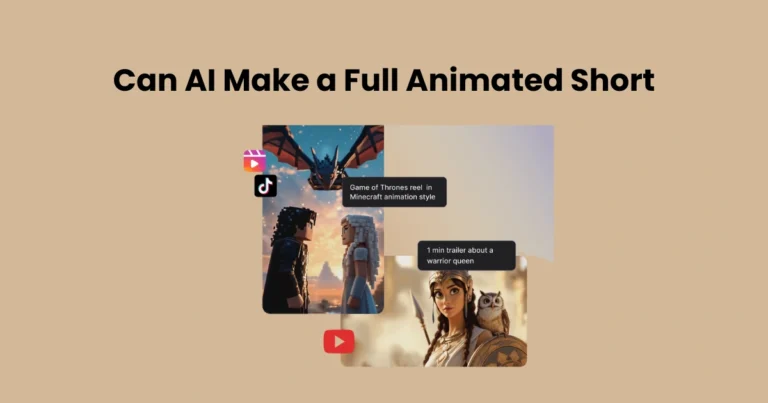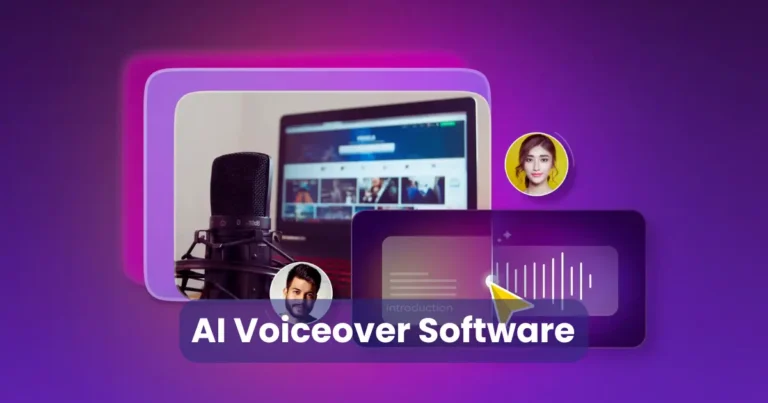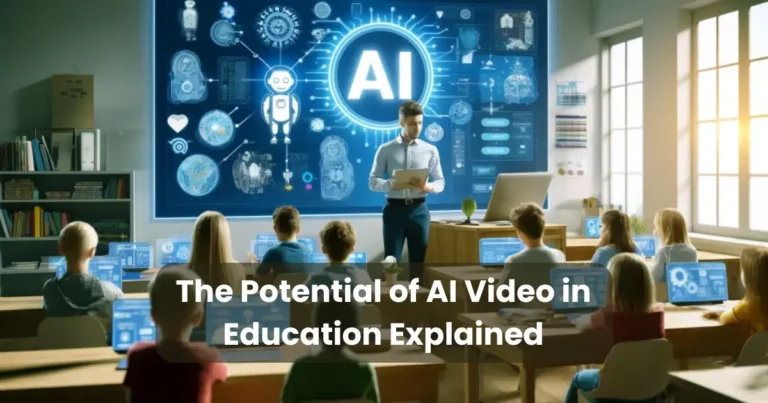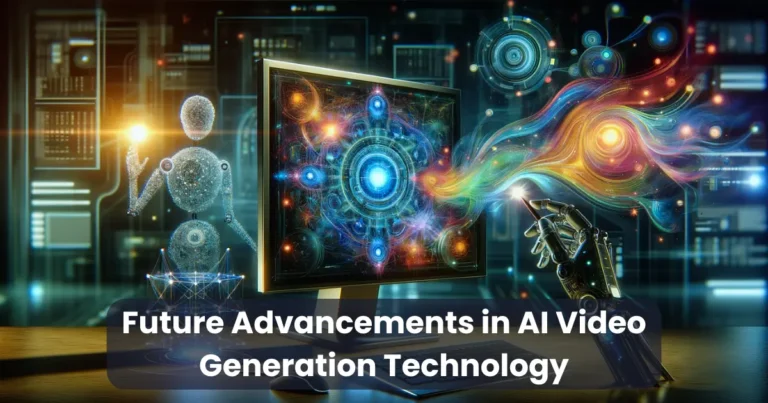AI To Search For Youtube Videos | Future of AI in YouTube Video
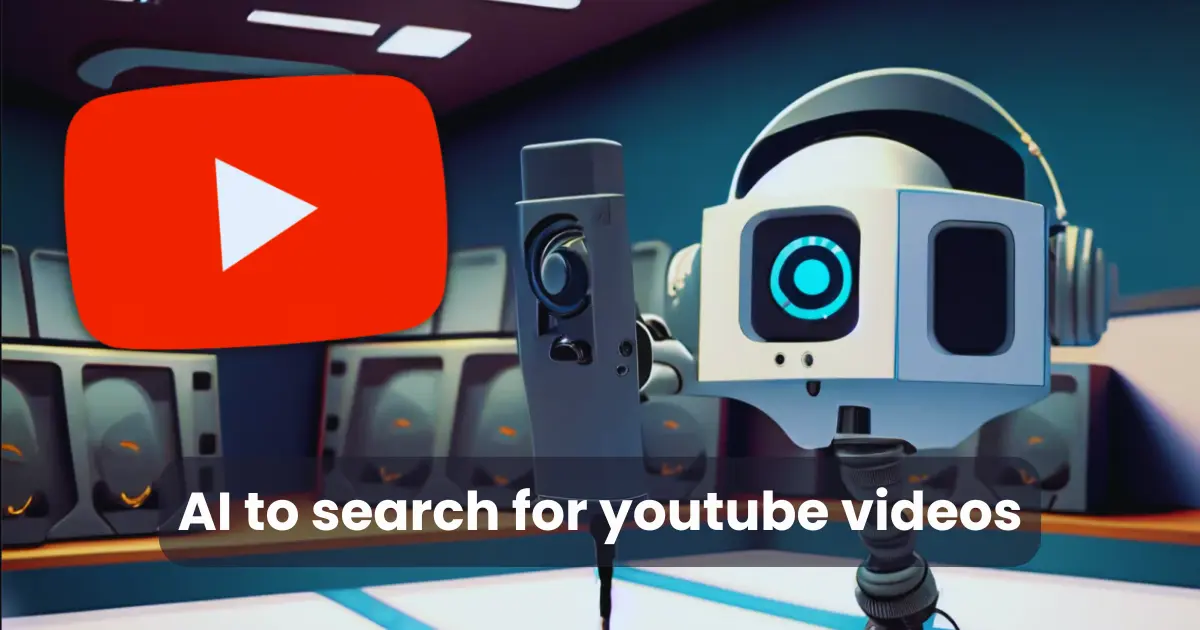
Contents
- 1 How AI Improves YouTube Video Search
- 2 Best AI Tools to Search for YouTube Videos
- 3 Benefits of Using AI to Search for YouTube Videos
- 3.1 1. Faster and More Accurate Results
- 3.2 2. Personalized Video Recommendations
- 3.3 3. Enhanced Search Accuracy with NLP
- 3.4 4. Voice and Visual Search Capabilities
- 3.5 5. Increased Accessibility and Inclusivity
- 3.6 6. Improved User Experience
- 3.7 7. Advanced Content Discovery
- 3.8 8. Enhanced Content Optimization for Creators
- 4 How to Use AI to Search for YouTube Videos Effectively
- 4.1 1. Use YouTube’s Built-In AI Features
- 4.2 2. Optimize Your Keywords with AI Tools
- 4.3 3. Search Using Natural Language
- 4.4 4. Explore Visual Search Options
- 4.5 5. Leverage AI for Personalized Video Recommendations
- 4.6 6. Utilize AI-Driven Tools for Content Discovery
- 4.7 7. Use AI-Powered Tools for Video Transcription
- 5 Future of AI in YouTube Video Search
- 5.1 1. More Advanced Natural Language Processing (NLP)
- 5.2 2. AI-Powered Visual Search Will Become Mainstream
- 5.3 3. Hyper-Personalization of Video Recommendations
- 5.4 4. Enhanced AI for Voice Search
- 5.5 5. AI for Video Summarization and Search
- 5.6 6. Real-Time Translation and Multi-Subtitles
- 5.7 7. AI-Powered Content Moderation and Search Safety
- 5.8 8. More Seamless Integration with Other AI-Powered Platforms
- 5.9 Conclusion
In today’s digital era, YouTube has become one of the largest platforms for discovering video content. With millions of videos uploaded every day, finding the right video can often feel overwhelming. Traditional search methods sometimes fall short, especially when users are looking for specific content in a sea of options. This is where AI to search for YouTube videos comes into play AI technology enables smarter, faster, and more efficient video search results. It not only enhances the search experience by processing large amounts of data but also helps deliver personalized and more relevant video suggestions. With advancements in machine learning and natural language processing, AI is transforming how users interact with YouTube’s search engine, making it easier to discover videos that meet their needs.
How AI Improves YouTube Video Search
AI technology has brought significant advancements to the way users search for videos on YouTube. With its ability to analyze vast amounts of data, AI helps optimize video search by improving accuracy, relevance, and personalization. Here are some key ways AI enhances the search experience on YouTube:
AI-Powered Search Algorithms
AI algorithms play a crucial role in refining YouTube’s search engine. They analyze various factors such as video metadata, user behavior, and engagement patterns to deliver more accurate and relevant results. The machine learning models behind these algorithms continuously learn from user interactions and feedback, improving search results over time. This means the more you use YouTube, the more the search engine adapts to your preferences and provides tailored recommendations based on your viewing history.
Natural Language Processing (NLP) in Search
Natural Language Processing (NLP) is one of the most powerful tools AI uses to improve video search. Unlike traditional search methods, which rely on exact keyword matching, NLP allows YouTube’s search engine to understand user queries in a more natural, conversational way. This helps users find videos even if they don’t use precise keywords. For instance, if a user searches for “How to bake a cake without eggs,” NLP enables YouTube to understand the full context and return relevant content, even if the specific search terms differ from the titles of the videos.
Voice and Visual Search Capabilities
AI has also made it possible to search for videos using voice commands and even visual elements. Voice search technology allows users to find videos simply by speaking their queries. This feature has become more accurate due to AI’s ability to process and interpret voice commands, even when they are spoken in different accents or languages.
Additionally, AI-driven visual search allows users to search for videos based on images or video snippets. This means users can find videos related to a specific scene, object, or visual cue, enhancing the search process even further.
Personalized Video Recommendations
AI algorithms take into account your previous search history, watch behavior, and user interactions to provide personalized video recommendations. By analyzing what types of videos you engage with, YouTube’s AI system can suggest content that aligns with your interests, making it easier to discover new videos and channels. As AI continually learns from user behavior, these recommendations become more refined and accurate, ensuring that you are always presented with videos that are relevant to you.
By incorporating these AI technologies, YouTube’s search engine is not only able to return more accurate and relevant results but also creates a more user-friendly and intuitive experience. As AI continues to evolve, the search process will only become smarter, enhancing how users find videos on the platform.
Best AI Tools to Search for YouTube Videos
As AI technology evolves, several tools and platforms have been developed to enhance the video search experience on YouTube. These tools utilize AI to provide smarter, more efficient, and personalized search results. Below are some of the best AI tools available to help users search for YouTube videos more effectively:

1. YouTube’s Own AI Search Features
YouTube itself uses advanced AI algorithms to power its video search function. The platform’s built-in AI is designed to help users find videos more quickly by analyzing various factors like video titles, descriptions, keywords, user engagement, and viewing patterns. This AI-powered search also adapts to each user’s behavior, providing increasingly relevant results over time. Some key features include:
- Autocompletion: As you start typing a query, YouTube’s AI suggests popular searches based on trends, improving the efficiency of the search process.
- Personalized Recommendations: YouTube’s AI suggests videos tailored to your previous viewing habits, providing a more individualized search experience.
2. VidIQ
VidIQ is an AI-powered tool designed to help users optimize their YouTube search and content creation efforts. With VidIQ, users can improve their video discovery and search ranking by analyzing search trends and keywords. The tool provides valuable insights, such as:
- Keyword Research: VidIQ’s AI technology helps identify trending keywords and search terms relevant to your content.
- Video SEO Optimization: It suggests ways to improve your video titles, descriptions, and tags, optimizing them for better discoverability.
- Trending Videos: VidIQ also analyzes the performance of videos within a specific niche or topic, providing insights into the best-performing content to help you stay ahead of the competition.
3. TubeBuddy
TubeBuddy is another popular AI-driven tool that helps enhance YouTube search and video performance. It integrates with YouTube’s platform to offer various AI-powered features that improve video discoverability:
- Keyword Explorer: TubeBuddy uses AI to identify the most effective keywords for video titles, tags, and descriptions, ensuring better search visibility.
- SEO Tools: It offers AI-based SEO recommendations for optimizing content and metadata, increasing the likelihood of ranking higher in YouTube search results.
- Competitor Analysis: TubeBuddy allows users to compare their videos with others in the same niche, using AI to identify strengths and areas for improvement in search rankings.
4. Google Cloud Video Intelligence API
For more advanced users, the Google Cloud Video Intelligence API is a powerful AI tool that allows you to analyze YouTube videos and extract meaningful data. This API uses AI to recognize objects, actions, and scenes within video content, enabling enhanced search capabilities:
- Object Recognition: AI analyzes the visual content within videos, identifying objects, people, and activities. This allows users to search for videos by visual elements instead of relying solely on titles or keywords.
- Content Labeling: The API classifies videos into categories, making it easier to discover content related to specific topics or interests.
5. YTMonster
YTMonster is an AI-powered tool that provides automatic video ranking and promotion features to enhance YouTube search visibility. By leveraging AI, YTMonster helps users improve their video’s search ranking by promoting content and improving engagement metrics. Key features include:
- Video Ranking Optimization: AI identifies the most effective strategies for improving video rankings on YouTube.
- Engagement Boosting: AI helps increase engagement by promoting content to the right audience, improving interaction rates, and thus, enhancing search visibility.
6. Descript
Descript is a tool that uses AI for video transcription and editing. While primarily focused on editing, it also has features that improve YouTube search by enhancing video accessibility:
- Transcription and Captions: Descript’s AI generates accurate transcriptions, making videos searchable by the text within them.
- Keyword Highlighting: By transcribing and analyzing video content, Descript makes it easier to identify key phrases and terms that can improve your video’s searchability.
7. ChatGPT-Driven AI Tools (Like ChatGPT for YouTube)
Some AI tools, including ChatGPT-based models, can be integrated into YouTube search strategies to help identify relevant content. These AI systems analyze large datasets to suggest video content or assist in creating search queries. By understanding your search intent through natural language processing, AI can help find videos that match even vague or complex queries.
Benefits of Using AI to Search for YouTube Videos
AI-driven tools and algorithms have transformed the way we interact with YouTube’s search functionality, providing several distinct advantages over traditional methods. Here are some of the key benefits of using AI to search for YouTube videos:

1. Faster and More Accurate Results
One of the primary benefits of AI in video search is its ability to deliver faster and more accurate results. Traditional search engines often require users to refine their queries and sift through pages of irrelevant content. In contrast, AI-powered search tools analyze user behavior, content metadata, and engagement metrics to instantly deliver the most relevant videos. By learning from past searches, AI minimizes the time it takes to find what you’re looking for, making the entire search process much more efficient.
2. Personalized Video Recommendations
AI can tailor the video search experience to each individual user. Based on your viewing history, preferences, and even social media activity, AI analyzes patterns to provide video suggestions that align with your specific interests. Over time, the more you interact with YouTube, the more refined these recommendations become. As a result, users are more likely to discover content that resonates with their tastes, making YouTube a more enjoyable and personalized platform.
3. Enhanced Search Accuracy with NLP
Natural Language Processing (NLP) is a critical AI technology that allows YouTube to understand and process user queries in a more human-like manner. Rather than relying on exact keyword matches, AI interprets the intent behind your query. For instance, even if you don’t use specific keywords in your search, AI will understand your overall request. This leads to more accurate search results, helping users find videos they might not have found using traditional keyword-based search methods.
4. Voice and Visual Search Capabilities
AI has enabled YouTube to support voice and visual search, which significantly broadens the ways users can search for videos.
- Voice Search: You can simply speak your query, and YouTube’s AI will process it to return relevant video results. This makes searching more hands-free and convenient, particularly on mobile devices or when multitasking.
- Visual Search: AI also allows users to search for videos based on visual elements. Whether you’re looking for a video with a specific person, object, or scene, AI can recognize images and provide results that match the visual content you’re interested in.
5. Increased Accessibility and Inclusivity
AI plays a crucial role in making YouTube more accessible to diverse audiences. By using AI-driven transcription and captioning features, videos can be searched by the spoken content within them. This feature makes YouTube content accessible to people with hearing impairments, and it also enables users to search for specific topics discussed within videos, even if the video title or description doesn’t include those terms.
6. Improved User Experience
AI continuously learns from user interactions, which means that over time, it becomes more effective at predicting what you’re looking for. As it fine-tunes its understanding of your search patterns and preferences, the platform provides a smoother and more intuitive user experience. Additionally, AI can optimize the presentation of video results by prioritizing the most relevant content, saving users from having to scroll through irrelevant options.
7. Advanced Content Discovery
AI doesn’t just help you find what you know; it also helps you discover new content. By analyzing trends, topics, and engagement levels, AI recommends videos that you may not have thought to search for but are related to your interests. This expanded content discovery improves the overall YouTube experience by making it easier to explore new creators, genres, and topics.
8. Enhanced Content Optimization for Creators
For content creators, AI-powered search tools can provide valuable insights into how to optimize their videos for better discoverability. By understanding which keywords and topics are trending, creators can tailor their video titles, tags, and descriptions to rank higher in search results. AI also helps creators track engagement metrics, ensuring their content reaches the right audience.
How to Use AI to Search for YouTube Videos Effectively
AI technology has revolutionized the way users interact with YouTube, making the process of finding videos faster, more personalized, and more efficient. By leveraging AI-powered tools and features, users can improve the effectiveness of their YouTube searches. Here’s a guide on how to use AI to search for YouTube videos effectively:

1. Use YouTube’s Built-In AI Features
YouTube has integrated AI-powered features into its platform to enhance the search experience. To use these features effectively, follow these steps:
- Leverage Auto-Suggestions: As you type in the search bar, YouTube’s AI will automatically suggest popular searches related to your query. These suggestions are based on current trends and the most common searches, so selecting one of them can help you find relevant videos faster.
- Use Voice Search: Instead of typing, use YouTube’s voice search feature, which is powered by AI. Simply click on the microphone icon in the search bar and say your query. This feature works well on both mobile and desktop devices, offering hands-free searching.
- Engage with Personalized Recommendations: YouTube’s AI tailors video suggestions based on your previous viewing history. Keep watching and interacting with videos, and over time, YouTube will suggest even more relevant content.
2. Optimize Your Keywords with AI Tools
AI-powered tools like VidIQ and TubeBuddy can significantly enhance your search results by helping you optimize keywords and tags. Here’s how to use these tools effectively:
- Keyword Research: Use VidIQ or TubeBuddy’s AI-driven keyword tools to find the best search terms related to your interests. These tools analyze trending keywords and suggest phrases with high search volume but low competition, improving your chances of finding relevant videos.
- SEO Optimization: When uploading content, use AI tools to ensure your video titles, descriptions, and tags are optimized for search visibility. The AI helps you understand which keywords are likely to generate more views based on current search trends.
3. Search Using Natural Language
With AI’s advancements in Natural Language Processing (NLP), YouTube can now interpret complex, conversational queries. Instead of using simple or exact keywords, try searching with more natural, sentence-like phrases. For example, instead of searching for “how to fix a leaky faucet,” you could type “what’s the best way to fix a leaky faucet at home?”
By using NLP, you allow AI to better understand your intent and provide more accurate and relevant search results, even if your phrasing differs from typical keyword searches.
4. Explore Visual Search Options
AI’s visual recognition capabilities allow users to search for videos based on images or visual content within the videos themselves. Here’s how to use this feature effectively:
- Use Video Thumbnails: If you see a thumbnail that catches your eye and want to learn more, you can right-click on it or use Google Lens (if integrated with YouTube) to perform a visual search. AI will help identify the content of the video and provide you with similar videos or related results.
- Search for Specific Visuals: If you’re interested in a particular scene or object in a video, AI can help identify and search for videos based on visual cues. For example, you might search for videos related to specific actions, landscapes, or objects shown in a video.
5. Leverage AI for Personalized Video Recommendations
To make your search more effective, engage with YouTube’s personalized recommendations, which are powered by AI. Here’s how to maximize this feature:
- Interact with Recommended Videos: When YouTube suggests videos on your homepage or in the sidebar, click on those that interest you. The more you interact with these videos, the more personalized your recommendations become.
- Create Playlists: Use YouTube’s AI to create playlists of videos that match your interests. By saving these videos, you’ll help the AI understand your preferences and tailor future recommendations accordingly.
6. Utilize AI-Driven Tools for Content Discovery
There are several third-party AI tools available to help discover content beyond what is suggested by YouTube’s search engine. Tools like Google Cloud Video Intelligence API and YTMonster use AI to analyze video content deeply and improve video search efficiency:
- Google Cloud Video Intelligence API: This tool can identify objects, people, and even actions in videos, allowing users to search videos by visual elements, not just titles or descriptions.
- YTMonster: YTMonster leverages AI to rank and promote videos based on search queries, helping users find high-quality content by optimizing search results and improving video visibility.
7. Use AI-Powered Tools for Video Transcription
Some AI tools, like Descript, offer transcription services that turn spoken words in videos into searchable text. This improves the searchability of videos that may not have clear keywords in their title or description. Here’s how you can use it:
- Search By Transcription: If you’re looking for specific content discussed in a video, you can search by keywords in the transcription rather than relying solely on the video’s title. This allows for more detailed and targeted video discovery.
- Enhanced Accessibility: AI-generated transcriptions make content accessible to a broader audience, including those with hearing impairments. By searching for videos with captions, users can access and engage with content more easily.
Future of AI in YouTube Video Search
The integration of AI into YouTube video search has already transformed the platform’s functionality, making the process faster, more personalized, and more effective. As technology continues to advance, the future of AI in YouTube video search promises even greater innovations. Here’s a look at the potential developments that could shape the future of AI-driven search on YouTube:

1. More Advanced Natural Language Processing (NLP)
The future of AI in YouTube video search will see even more refined Natural Language Processing (NLP) capabilities. Currently, AI can interpret basic conversational queries, but as NLP evolves, YouTube’s AI will be able to understand more complex, nuanced questions and provide even more accurate results.
- Contextual Understanding: AI will not only understand the words you use but also the context behind your query. For instance, if you search for “best tutorials for learning Python,” the AI might know if you’re referring to beginner-level tutorials or advanced ones based on your past searches.
- Multilingual Capabilities: AI will become more proficient at processing multiple languages, enabling users from different linguistic backgrounds to search YouTube in their native language. NLP will also bridge gaps between languages, translating queries to deliver globally relevant results.
2. AI-Powered Visual Search Will Become Mainstream
The visual search capabilities powered by AI are expected to advance significantly in the future. Currently, AI can identify specific scenes, objects, or people within videos, but with further improvements, these capabilities will become more intuitive and widespread.
- Real-Time Visual Search: Imagine watching a video and being able to instantly search for similar content or related videos by scanning a scene or a frame. AI could analyze the video in real-time, delivering relevant results based on what’s happening on-screen.
- Enhanced Object Recognition: As AI’s object recognition improves, users will be able to search YouTube videos not only based on the visual elements present in a video but also by identifying certain behaviors or actions, such as a person performing a task or a specific movement within the video.
3. Hyper-Personalization of Video Recommendations
In the future, AI will push the boundaries of personalization even further. Rather than simply basing video recommendations on past behavior, AI will incorporate more variables, such as current trends, geographic location, and social media activity, to create hyper-personalized video experiences.
- Context-Aware Search Results: AI will not only consider the user’s previous searches and views but also the time of day, location, or even the device being used to offer contextually relevant search results.
- Real-Time Adaptation: As your preferences evolve, AI will be able to quickly adapt and update the search recommendations in real-time. For example, if you start watching a new genre of videos, AI will learn and suggest more videos within that genre without any input from you.
4. Enhanced AI for Voice Search
Voice search powered by AI has gained popularity, and in the future, it’s expected to become even more advanced. As AI’s speech recognition capabilities improve, voice search will become a more natural and efficient way to find videos on YouTube.
- Multi-Intent Queries: Future AI-powered voice search will be capable of processing multi-part, complex queries. For instance, a user could say, “Show me cooking tutorials for beginners with vegan recipes that don’t require an oven.” AI would understand and prioritize the relevant search results.
- Emotional and Tone Recognition: Voice search could even incorporate emotional tone analysis, which could further refine search results based on a user’s emotional state or urgency. For example, a frustrated user could ask for “quick fixes for a broken phone,” and the AI would prioritize tutorials with fast solutions.
5. AI for Video Summarization and Search
In the future, AI may also be able to summarize videos to improve the search experience. By analyzing video content more deeply, AI could generate concise video summaries, helping users quickly decide whether a video is relevant to their needs.
- Video Snapshots: AI could generate short snippets or summaries based on the video content, allowing users to see the most important sections of a video before even clicking on it. This will speed up video discovery and give users more control over what content they watch.
- Time-Specific Search: Users could search for specific moments within a video, such as “when did the speaker explain the Python code?” AI will pinpoint these exact moments in the video, allowing users to skip to the relevant part directly.
6. Real-Time Translation and Multi-Subtitles
AI’s capabilities in real-time translation will continue to evolve, making YouTube content more globally accessible. The ability to instantly translate video content will break down language barriers, allowing users to search for content in any language and access video subtitles in multiple languages.
- Real-Time Video Translations: AI could provide automatic translation of video dialogue or captions into a variety of languages while the video is playing, making content from creators around the world accessible to anyone.
- Multilingual Search: Users will be able to search for videos in any language, and AI will adapt to offer results in the user’s preferred language, including translations of video titles and descriptions.
7. AI-Powered Content Moderation and Search Safety
The future of AI in YouTube video search also involves enhanced moderation capabilities. As AI systems improve, they will become better at detecting harmful or inappropriate content and filtering out videos that violate guidelines.
- Safe Search Results: AI will ensure that the search results you get are safe and suitable for your age and preferences, especially in sensitive or controversial categories.
- Proactive Content Moderation: Instead of relying on reports from users, AI will proactively flag inappropriate content and ensure that only safe, family-friendly videos are recommended to the users, enhancing the overall platform experience.
8. More Seamless Integration with Other AI-Powered Platforms
YouTube will likely integrate more seamlessly with other AI-powered platforms in the future. This means that you could search for videos not just on YouTube but across the web and receive results aggregated from multiple sources.
- Cross-Platform Search: For instance, AI might integrate YouTube search results with those from platforms like Vimeo or Dailymotion, providing a more comprehensive list of videos on a given topic.
- Collaborative AI: By combining search data from various AI systems, YouTube could create an even more interconnected and intelligent search system that anticipates what you want to watch before you even search.
Conclusion
AI has already made significant strides in transforming YouTube’s video search capabilities, and the future promises even more exciting advancements. From enhanced natural language processing and real-time visual search to greater personalization and multilingual support, AI is set to make video discovery more intuitive and efficient than ever before. By leveraging AI, YouTube will not only streamline search processes but also make the platform more accessible and engaging for users across the globe.
As AI continues to evolve, users can expect to see more intelligent search features that will allow them to find content faster, more accurately, and with greater ease. Content creators, too, will benefit from AI-driven optimizations, gaining better visibility for their videos and expanding their reach. In the end, AI will revolutionize YouTube search, creating a more seamless, personalized, and smarter experience for everyone. The future of AI in YouTube video search is undeniably bright, offering a world of possibilities for users and creators alike.


